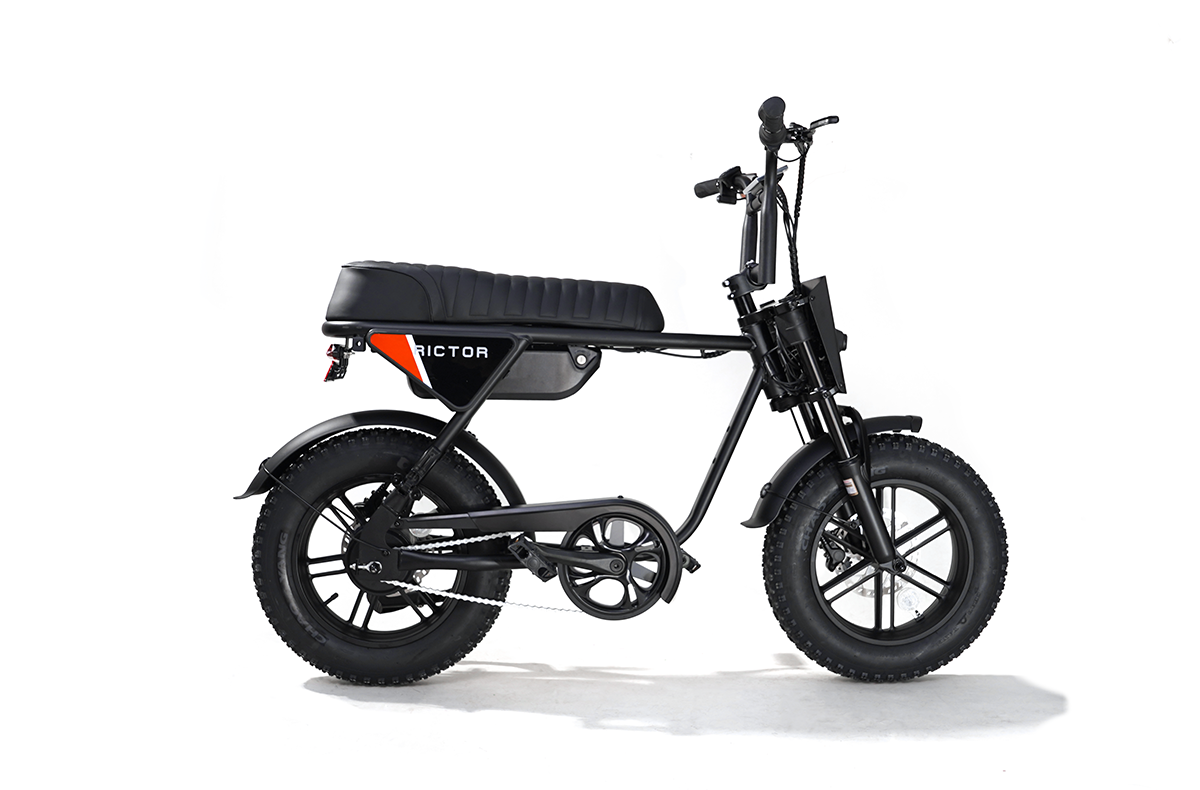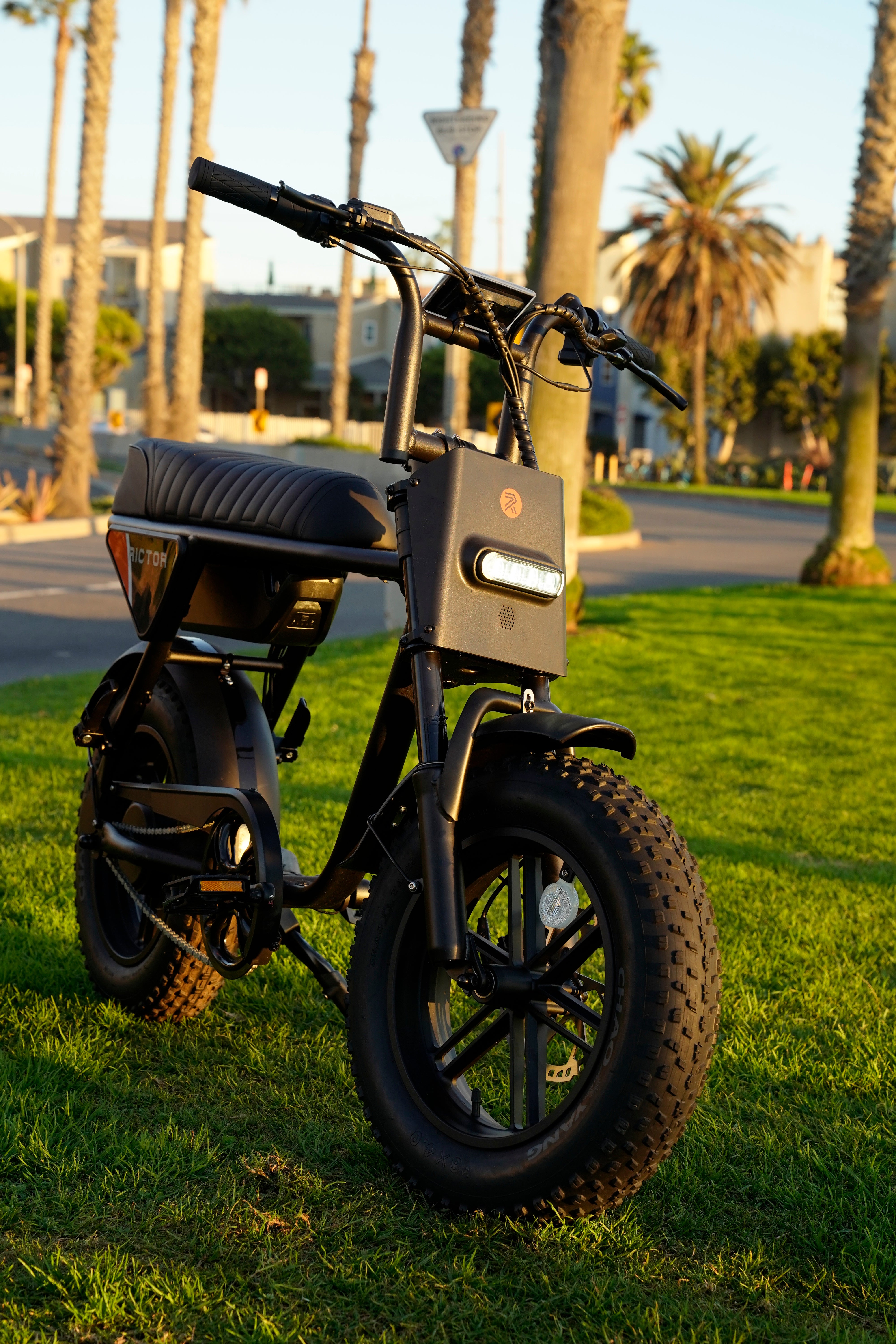
Electric Bike Kit | Hall sensor on bike explained
A Hall sensor is a small device that plays a crucial role in electric bikes by detecting the position of magnets in the motor or pedals.
When you pedal, the sensor picks up changes in the magnetic field and sends signals to the bike’s controller, helping it determine how much power to provide.
Now, let’s explore everything you need to know about Hall sensors and how they can enhance your electric bike experience.
What’s Hall Sensor
A Hall sensor is a tiny gadget found in many electric bike kits. Its main job is to detect the position of magnets in your bike's motor or pedals.
When you pedal, the Hall sensor picks up the magnetic field changes and sends signals to the bike's controller.
This helps the bike understand how fast you're pedaling and when to assist you. Without a Hall sensor, your e-bike would struggle to provide the right amount of power when you need it.
Basically, it helps create a smoother and more responsive ride.
You might not think about it while cruising along, but the Hall sensor plays a huge role in how your bike feels.
It makes sure you get the right support as you pedal, whether you’re cruising on flat roads or tackling some hills.
Benefits of Hall Sensors
Hall sensors offer several benefits that really enhance your riding experience.
They make the bike respond better to your pedaling.
When you push on the pedals, the Hall sensor quickly relays that information to the motor, ensuring you get the right amount of power right when you need it.
This means smoother acceleration and a more natural feel while riding.
You can also enjoy better energy efficiency, as the bike will only use as much power as necessary to match your effort.
Hall sensors help maintain a steady speed, making your rides more enjoyable, especially on longer trips.
They help in providing consistent support regardless of terrain. Whether you’re going uphill, downhill, or on flat ground, the Hall sensor adjusts the motor's output to give you a seamless ride.
This means less strain on you, making long rides more comfortable.
Overall, Hall sensors enhance the e-bike experience by ensuring you get the right support and power without any hiccups.
Signs of Trouble
Like any other part of your bike, Hall sensors can run into problems.
One common sign is if you notice that the bike doesn’t respond as it should when you pedal.
If the power feels weak or inconsistent, the Hall sensor might be acting up. Another red flag is if the motor cuts in and out while riding.
This can be frustrating, especially if you’re trying to enjoy a smooth ride. You might also hear unusual noises coming from the motor, which could indicate that the sensor isn’t working properly.
Sometimes, the bike might not assist you at all, leaving you to pedal without any help.
If you’re experiencing these issues, it’s a good idea to check the Hall sensor.
Regular maintenance can help you catch these problems before they get worse.
So, if something feels off, don’t ignore it—check it out!
SEE ALSO Electric Bike Kit | PAS Sensor Explained

Hall Sensors vs. PAS Sensors
When looking at electric bike kits, you might come across Hall sensors and PAS (Pedal Assist) sensors.
While they both help your bike work better, they serve different purposes.
Hall sensors detect the position of magnets to help control the motor’s output based on your pedaling.
They respond quickly and provide a smooth riding experience.
PAS sensors monitor your pedaling speed and cadence to determine how much assistance you get from the motor.
This means that PAS sensors focus more on how fast you’re pedaling rather than the position of the bike components.
Hall sensors often provide quicker response times and can be more efficient, especially on varying terrain.
However, some riders prefer the feel of PAS sensors because they give a different type of assistance based on pedaling effort.
Ultimately, the choice between Hall sensors and PAS sensors can come down to personal preference and riding style.
It’s worth considering what kind of riding experience you want when choosing your e-bike kit.
| Feature | Hall Sensors | PAS Sensors |
|---|---|---|
| Function | Detects the position of magnets | Monitors pedaling speed and cadence |
| Response Time | Quick and efficient | Slower response based on pedaling |
| Control | Adjusts motor output based on position | Adjusts assistance based on pedaling speed |
| Riding Experience | Provides smoother, more responsive rides | Offers assistance based on effort |
| Terrain Performance | Better for varying terrains | More consistent on flat surfaces |
| User Preference | Often preferred for efficiency | Preferred for a different feel |

What to Know Before Upgrading
Thinking about upgrading to a Hall sensor-equipped e-bike kit?
First, assess your riding style.
If you enjoy tackling hills or going on long rides, a Hall sensor can greatly enhance how smoothly your bike responds.
This can lead to a more enjoyable experience overall.
To determine if a Hall sensor kit will work with your bike, you need to check several key details.
Look at your bike's motor type and power rating, the wiring harness, and the mounting points for the sensor. It’s also helpful to see if your bike’s controller is compatible with the Hall sensor.
As far as installation, a great first step is to search for tutorial videos on YouTube. Many experienced riders share their installation processes, which can guide you through the steps.
Here are some basic steps to install a Hall sensor
Remove the Wheel: Take off the wheel where the sensor will be mounted to access the motor.
Locate the Sensor Slot: Identify where the Hall sensor fits within the motor or near the pedals.
Install the Sensor: Place the sensor in the designated slot and secure it properly.
Connect the Wires: Connect the sensor’s wires to the bike's wiring harness, ensuring everything is tight and secure.
Reattach the Wheel: Put the wheel back on and check the sensor's position.
Test the System: Finally, power on the bike and test the Hall sensor’s functionality.
>If you keep failing, please seek a professional to help you install.
Effects of Temperature
Temperature can play a significant role in how well your Hall sensor performs. Like many electronic components, Hall sensors can be affected by extreme heat or cold.
In very cold conditions, you might notice a delay in how quickly the sensor responds.
This can lead to a less responsive ride, which is not ideal when you’re trying to enjoy your bike.
If it’s too hot, the sensor might overheat and fail to work properly. It’s essential to keep an eye on the conditions you’re riding in, as this can help you anticipate any potential issues.
If you often ride in extreme temperatures, consider looking for sensors specifically designed to handle those conditions.
Additionally, it’s a good practice to give your bike a little extra care in these situations.
Try to store your bike in a cool, dry place when you’re not using it.
How to Test a Hall Sensor
Testing your Hall sensor is straightforward and doesn’t require a lot of specialized tools.
First, you need to locate the Hall sensor, which is typically found near the motor or pedals of your electric bike.
It usually looks like a small rectangular or cylindrical component with wires connected to it.
The sensor might have a plastic casing and is often mounted on the bike frame or close to the drivetrain.
Once you’ve found the Hall sensor, visually inspect it for any obvious damage, like frayed wires or loose connections.
If everything seems intact, grab a multimeter to check its functionality. Set the multimeter to measure voltage.
To test the sensor, move a magnet close to it; this simulates the motion that would normally activate it.
If the sensor is working properly, you should see a change in the voltage reading on the multimeter.
If there’s no change, that indicates the Hall sensor might be faulty.
Remember to handle all electrical components with care to avoid any accidents.
Are Hall Sensors Worth It
The answer often depends on how you ride and what you’re looking for in an e-bike experience.
If you enjoy smoother rides, better speed control, and more efficient power use, a Hall sensor can make a significant difference.
Many riders find that the added responsiveness and comfort on different terrains are well worth the cost.
If you frequently tackle hilly areas or go on long-distance rides, having a Hall sensor can enhance your overall experience.
For casual riders, the benefits of a Hall sensor might still be noticeable.
You’ll appreciate the smoother transitions as the motor kicks in, especially when starting from a stop.
This feature helps prevent jerky movements that can be uncomfortable.
Plus, if you ride in a mix of environments, from city streets to trails, a Hall sensor can help maintain a consistent feel no matter where you are.
Overall, many riders consider Hall sensors to be a worthwhile upgrade that improves both comfort and performance.
FAQs
Are there any specific brands known for high-quality Hall sensor kits?
Brands like Bafang, Tongsheng, and Shimano are well-regarded for their e-bike components, including Hall sensor kits. It’s a good idea to read reviews and get recommendations from other riders.
Can weather conditions affect the performance of a Hall sensor?
Yes, extreme weather conditions, such as heavy rain or snow, can potentially impact the performance of Hall sensors. It’s important to ensure that the sensor and its wiring are protected from moisture.
How long do Hall sensors typically last before needing replacement?
Hall sensors can last several years with proper care and maintenance. However, their lifespan can vary based on usage and environmental conditions, so regular checks are advisable.



